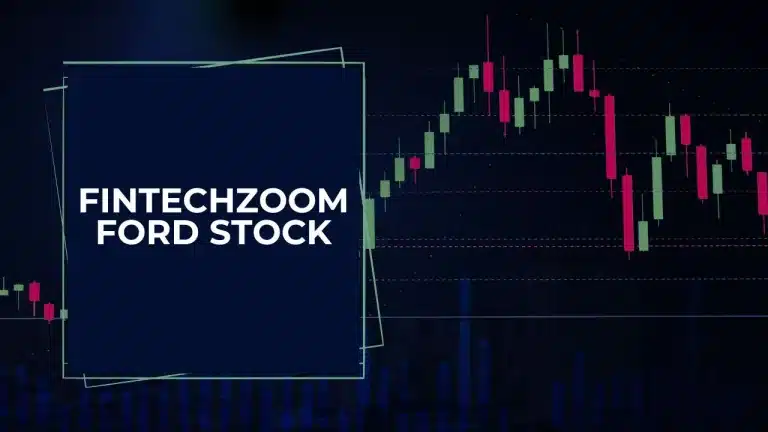Fintechzoom AMD Stock: Analysis and Predictions
In this analysis on Fintechzoom, we’ll review AMD stock performance, current financial performance, its standing in analyst ratings, and projections on its future stock price. Advanced Micro Devices (AMD) is a powerhouse in the semiconductor industry, known for its high-performance computing and graphics technologies.
As a key player, AMD competes with giants like Intel and Nvidia, driving innovation in areas such as desktop and server processors, as well as in gaming graphics. The company’s stock performance, financial health, and market outlook are of great interest to investors and market analysts alike.
AMD Stock Performance Overview
AMD’s stock (NASDAQ: AMD) has shown notable resilience and growth over the past year. As of April 2024, the stock price has increased by approximately 10.9% from the beginning of the year, trading around $163.46. This rise reflects a positive response from the market to AMD’s strategic initiatives and performance outcomes. The company has successfully capitalized on the growing demand for computing power and graphic processing units, especially amid the surge in remote working and the expansion of cloud technologies.
Several factors have contributed to AMD’s stock performance, including strong quarterly earnings reports and aggressive expansion in the data center market. For instance, the company reported a revenue of $6.17 billion in the last quarter, slightly above the market expectation of $6.13 billion. Such financial outcomes demonstrate AMD’s robust operational execution and strategic positioning in high-growth markets.
Financial Analysis of AMD
AMD’s financial strength is clearly reflected in its recent earnings and revenue growth. For the fiscal year 2024, AMD reported a substantial increase in revenue, forecasting a jump to $26.06 billion from the previous $22.68 billion, marking an impressive growth rate of approximately 14.92%. This growth trajectory is anticipated to continue, with revenue expected to rise to $32.84 billion in 2025. Such figures not only highlight AMD’s strong market position but also its ability to scale operations amidst challenging market conditions.
Earnings per share (EPS) have also seen a dramatic rise. The EPS for 2024 is projected at $3.66, up from $0.53 in the prior year, which represents an astonishing increase of over 590%. This spike is attributed to AMD’s enhanced profitability and efficient cost management strategies. Looking ahead, the EPS is expected to grow further to $5.52 in 2025, demonstrating AMD’s potential for sustained financial health and shareholder value creation.
The positive financial figures are a testament to AMD’s strategic initiatives, such as its focus on high-performance computing sectors and aggressive expansion into new markets, including data centers and AI technologies. By consistently delivering financial results that exceed expectations, AMD not only reinforces its market position but also bolsters investor confidence in its stock.
Fintechzoom Analyst Ratings and Price Targets on AMD Stock
Fintechzoom holds a generally positive outlook on AMD stock, underpinned by a strong consensus among market analysts. As of the latest updates, AMD has secured an impressive array of ratings from various analysts. The consensus rating for AMD is a “Moderate Buy” based on 30 analysts offering 12-month price targets. The average price target stands at $185.15, suggesting a potential upside of approximately 13.3% from its current trading price of $163.46. Notably, forecasts range from a low of $110.00 to a high of $270.00, illustrating the varying degrees of optimism and caution among analysts.
Several analysts at Fintechzoom have adjusted their price targets and ratings recently of AMD Stock, reflecting AMD’s ongoing market dynamics and future potential. For instance, analysts from Raymond James and Morgan Stanley have raised their price targets significantly, citing AMD’s strong market execution and innovation in key areas like gaming and data centers. Moreover, top firms such as UBS and Bank of America have boosted their targets, anticipating substantial growth in AMD’s financial performance and market share.
These ratings are crucial for investors as they provide insights into AMD’s perceived value and potential market performance. Analyst endorsements often lead to increased investor confidence and can influence stock prices. With the majority of analysts leaning towards a buy rating, it suggests a strong belief in AMD’s ability to continue its growth trajectory and outperform market expectations.
Pros and Cons of Investing in AMD
Pros
Investing in AMD offers several advantages. Firstly, AMD’s continuous innovation in the semiconductor space, particularly with its Ryzen and EPYC processor lines, has allowed it to capture significant market share from competitors. These products have become synonymous with high performance in both consumer and enterprise markets, bolstering AMD’s reputation and financial returns. Additionally, AMD’s strategic focus on emerging technologies like AI and data center solutions has positioned it well for future growth. The company’s recent financial performance reflects strong demand for its products, with revenue and earnings exceeding expectations.
Moreover, AMD’s partnerships with major tech firms enhance its market reach and stability. These collaborations not only broaden AMD’s distribution channels but also integrate its technologies into a wider array of products and services, diversifying its revenue streams and reducing dependency on a single market segment.
Cons
However, there are risks associated with investing in AMD. The semiconductor industry is highly competitive, with major players like Intel and Nvidia posing constant challenges in innovation and market share dominance. This competition could pressure AMD’s pricing and margins, particularly in segments where it faces intense rivalry.
Another risk is the cyclical nature of the semiconductor industry, which can lead to fluctuations in demand and pricing, impacting AMD’s financial performance. Additionally, global economic conditions, including trade policies and supply chain disruptions, can adversely affect AMD’s operations and profitability.
Lastly, investing in individual stocks like AMD carries inherent risks of market volatility. Share prices can be sensitive to market sentiment, regulatory changes, and company-specific developments, which can result in significant price swings.
Future Outlook for AMD
The outlook for AMD is promising, driven by several key factors that suggest continued growth and market expansion. Fintechzoom predicts that AMD will maintain its trajectory of revenue growth, with projections showing an increase from $26.06 billion in 2024 to potentially $32.84 billion by 2025. This anticipated growth is supported by AMD’s strategic initiatives in expanding its product lines and entering new markets, particularly in high-performance computing and artificial intelligence.
AMD is well-positioned to capitalize on the increasing demand for data center and AI technologies. Its EPYC processors have gained significant traction in the server market, which is expected to continue as cloud computing and data analytics industries expand. Furthermore, AMD’s advancements in GPU technologies for both gaming and professional markets are likely to boost its competitive edge against major rivals like Nvidia.
However, the company faces challenges such as intense competition and the inherent cyclicality of the semiconductor industry, which could affect its stock performance. Market volatility and economic factors also pose risks that could impact AMD’s growth projections.
Frequently Asked Questions (F.A.Q)
What is the current Fintechzoom analyst consensus on AMD Stock?
The current Fintechzoom analyst consensus on AMD stock is a “Moderate Buy,” based on a broad range of analyst ratings. The average price target is $185.15, indicating potential growth from the current price levels.
Is AMD a good investment for the future?
Based on its strong market position, continuous innovation, and strategic market expansions, AMD is considered a good investment by many analysts. However, potential investors should consider market risks and their personal investment goals.
How does AMD’s financial performance compare to its competitors?
AMD has shown robust financial growth, particularly in its revenue and EPS, which outpace many of its competitors. Its focus on high-growth areas like AI and data centers positions it favorably against competitors.
Wrapping Up
In conclusion, AMD presents a compelling case for investors, with its innovative product lineup and strategic market positioning poised to drive future growth. While the company faces challenges from market competition and economic conditions, its strong financial performance and positive analyst outlook reflect a potentially bright future. Investors considering AMD should weigh the pros and cons, keeping an eye on market trends and company developments.







